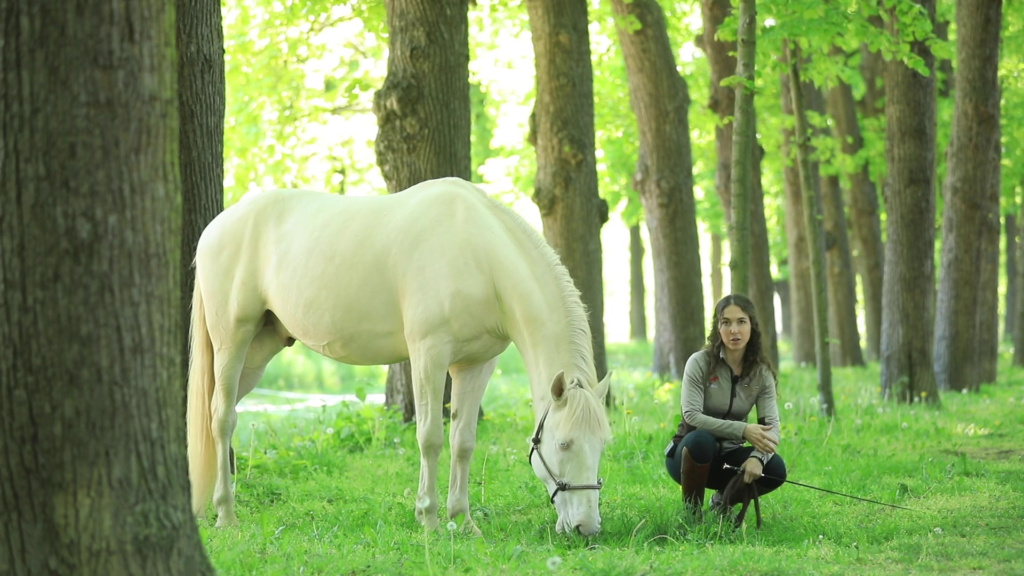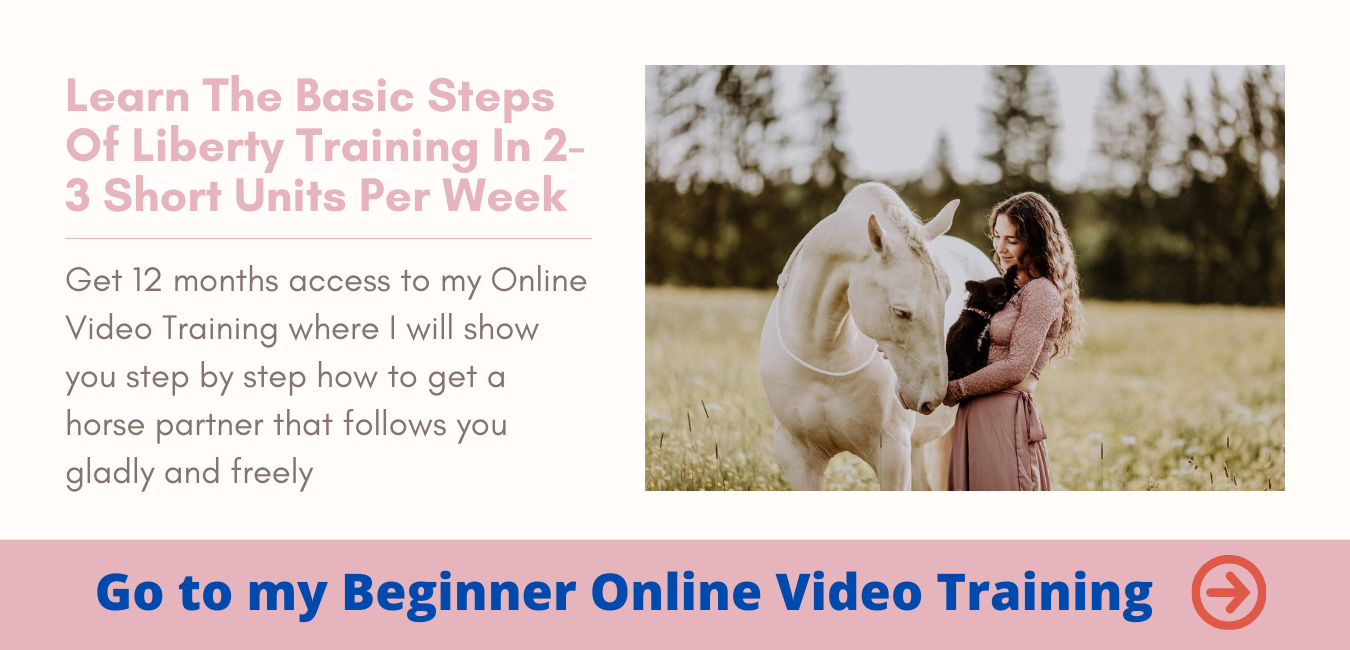Today I would like to give you a few tips on how your walks with your horse can be relaxed – and above all, lead to fewer discussions.
After all, the walk together with your horse should be a confidence-building measure – not the daily fight for certain rules.
Go for a walk? Why?
At first, walking with horses is not too popular. After all, horses are there to ride, aren’t they?
I do not think so! But I’m sure you already know that. Because I always show you how much fun it can be to work with your horse on the ground. Such a walk is still something completely different.
Far too often we take a walk with our horse far too naturally. But the fact that your horse is moving away with you from his herd is anything but self-evident! This requires trust: In you and your abilities as a sovereign “leading animal”. You must be able to give him security – and not disappoint his trust.
But what does that mean?
As in horse training, consistency and respect on both sides are your common foundation! What applies today should also apply tomorrow – and lead to as few discussions as possible.
The goal is for your horse to follow you willingly. No matter whether you are crossing a street or walking along a meadow path. So the relationship must be right from the start – because then a walk like this strengthens your bond.
The golden rules of leadership
We have already talked about the position I take when leading. However, since this is also relevant for walking, I would like to briefly go into this again.
I always lead my horses approximately at the level of the gait. This way I can see what is happening in my horse’s face and at the same time I don’t get jostled or even kicked when the horse gets scared and jumps off.
From the very beginning I teach my horses to maintain this position independently – it is their “comfort position” so to speak. If they maintain this position, they are neither driven nor slowed down: the “energy-saving position” for my horse.
So before you venture into the countryside, you should first practice this “Comfort Position” with your horse on the course or in the arena. Make sure that it sits well – then you will have it easier “outdoors”.
It also helps if your horse learns to give way. No matter if you use forehand or hindquarters – you should be able to move your horse in a targeted manner. To do this, you start by standing next to the side of your horse and move your horse’s shoulder and hindquarters by lightly touching them with your hand or crop.
Once you have set the course and the leading position, you can finally move your horse into the big, wide world ?
You control speed & direction
If you now leave the familiar surroundings of your horse, often the first problems start. But no matter what your horse does: Stay the sovereign “leading animal”.
Use your charisma and body language to convey to your horse that you have everything under control – and that he is safe with you.
So take every challenge as a gift! Because with every “danger” your horse will have more and more confidence in you and your abilities – and that you will make sure that he is “safe”.
But what to do when the grass is so tempting?
First and foremost: Here too, only you are in control. You decide when to eat and when not to eat!
However, the more often your horse manages to succeed in eating when he wants to, the harder it will be for you to get your horse out of this habit. So if possible, make sure from the beginning that the command for “eat” is clear!
The following exercise has proven to be particularly useful for giving instructions. Depending on what type of horse you have, you should not do this exercise for too long at the beginning. It should be fun for your horse – and not unnecessarily frustrate him.
So stand in a meadow or on a path. Your goal is that your horse doesn’t start eating before you allow him to. Depending on how cheeky and strong your horse is, you should definitely use a knotted halter or cavesson instead of the normal stable halter. This gives you more influence and allows you to control your horse more precisely.
It’s never wrong to take a crop with you, because then you can act in your body language in exactly the same way as when you train on the course.
So now start to establish a signal that allows your horse to eat.
This signal should preferably not be just a word! Horses are very visually oriented – this is how they communicate within the herd. Although they perceive different voice signals, they find it much easier to interpret body language correctly.
Therefore, I do not only use the word “eat”, but I actually go down on my knees and touch the ground with my hand. Your horse will most likely mirror you from the beginning and start eating immediately.
It will be more difficult to get your horse to stop eating again. Since I want to work on the rope without pulling in the long run, I use my body language in particular. I point with the crop towards the hindquarters, as if I were sending it to the switch and at the same time I invite my horse to come to me with a slightly bent posture.
If this is not enough to get my horse to take his head out of the juicy grass, you can start by touching the hindquarters with the crop and plucking the rope. It is important to connect your body language and the impulses with a voice signal in order to encourage your horse to move on in the long run with as few signals as possible.
And don’t be disappointed if it takes a little longer at the beginning! After all, the green grass is so tempting ? But be absolutely consistent – and demand an immediate reaction from your horse if it is to learn to graze only on your signal.
This result will not come overnight, but your training and patience will pay off – so that you can soon walk your horse along meadow paths without the annoying pulling. In fact, the key is that your horse will not succeed in walking alone. And learn that sooner or later your signal will come, allowing him to eat.
You can even use this exercise to reward your horse after a great exercise in the field – this directly increases motivation!
Consistency is really indispensable here – and therefore a good exercise for you ?. Because if you tend to give in willingly, you will not have much success with this exercise. Unless you have a very sensitive horse. But especially in spring, when the young grass is now tempting, many horses try their luck. And get away with it far too often.
[su_youtube url=”https://youtu.be/uB6mk73ySok”]
Have fun practicing!
All love,
Your Kenzie




